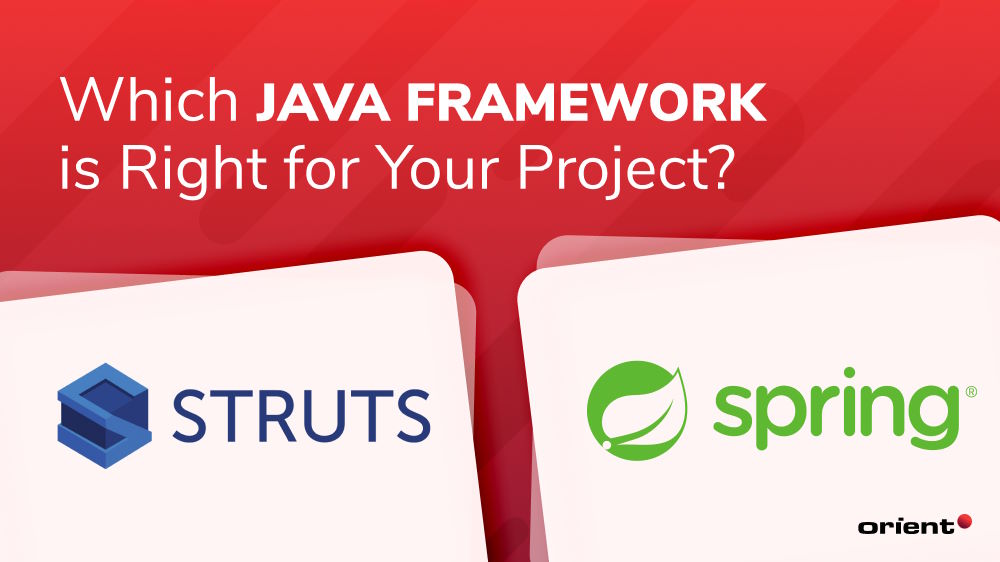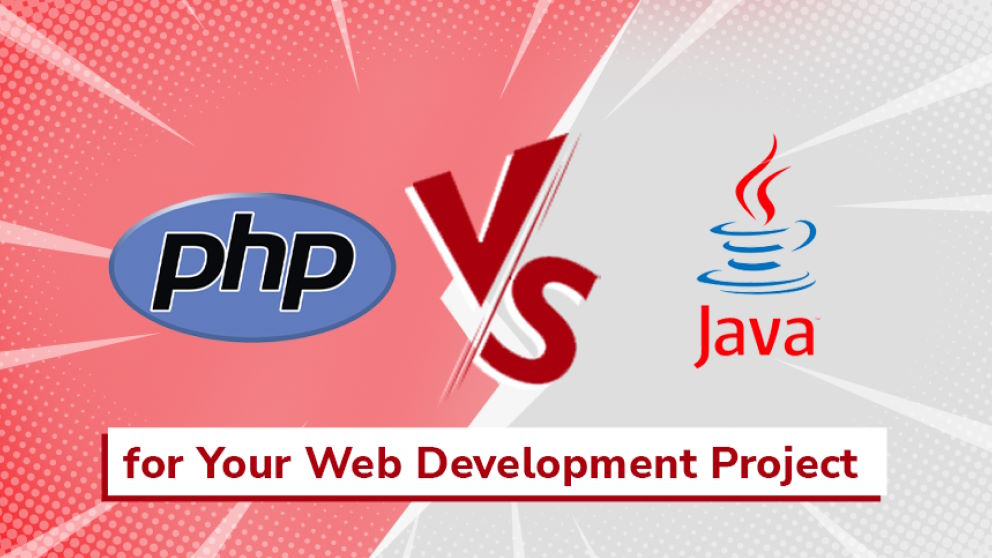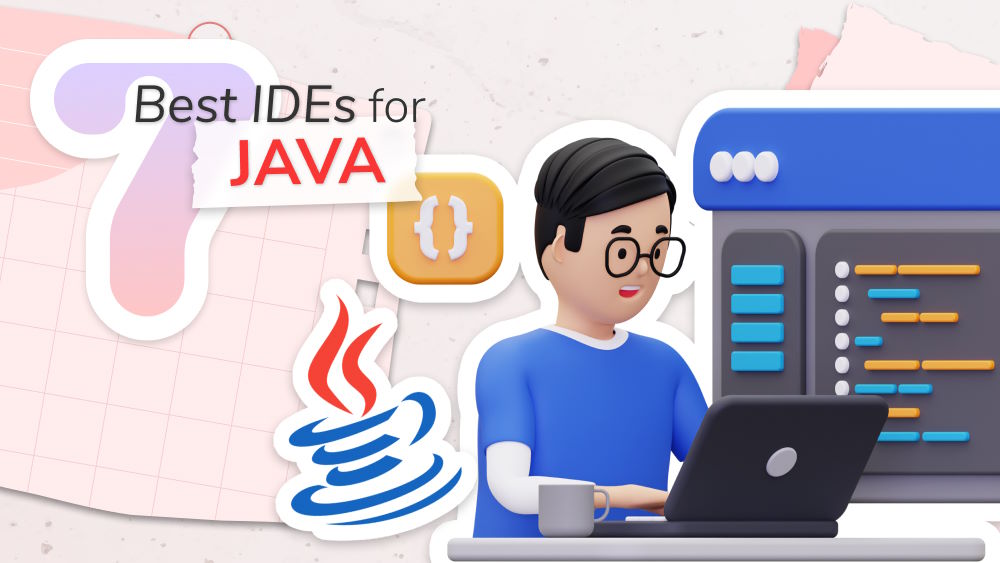Struts Vs. Spring: Which Java Framework is Right for Your Project?

Content Map
More chaptersWhether you have experience developing and releasing a Java application or you are delving into the process for the first time, then you may be wondering what types of tools, techniques, and methods programmers and developers use to bring your ideas to life.
Well, in terms of Java development, there are lots of libraries and frameworks to choose from, each of which is designed to help speed up development times, reduce inefficiencies, and increase code reusability on repeat aspects of the program. In the world of Java development, the two most popular frameworks are Struts and Spring.
But what is the difference between the two? And does it matter whether your development team chooses one over the other? In this article, you will find out what Struts and Spring are, what sets them apart, and which framework is best for your project.
What Is Struts?
Struts is a Java web framework developed and released by Apache in May 2000. The first version of Struts was called, well, Struts, but as of 2008, it has since been discontinued and replaced by the more advanced Struts 2, which continues to receive updates to this day.
Struts was revolutionary for its time as it enabled developers to create Java web applications using the MVC (Model View Controller) framework.
The MVC framework separates Java applications into three distinct components: Model, which handles the underlying business logic of the app; View, which presents the UI (User Interface) to the end user; and Controller, which stores the data required for the app to function properly.
As an open-source and freely available product, Struts is also compatible with other Java technologies, including JavaBeans (reusable software components) and XML (a markup Java programming language used to encode documents).
Key Features of Struts
Struts contain several features designed to aid in Java web application development, including interceptors, the MVC architecture, and result types, to name a few. Let’s take a closer look at what some of these features are and how they work:
Interceptors
As the term implies, interceptors are designed to prevent certain app requests from being processed. This enables the app to prioritize which requests to execute in a specific order, ensuring the app responds to the right requests (at the right time) and in a manner that matches user expectations.
Action Support
A special business class that instructs the Controller (business logic) to handle all incoming requests and come up with appropriate responses. The Action class is also called the POJO, otherwise known as the Plain-Old-Java-Object.
Ajax Support
Ajax is a type of class designed to streamline the development of interactive web apps. It does this by enabling the app to make HTTP requests and update portions of a web page without refreshing the entire page.
What Is Spring?
Spring is a Java framework developed and released by VMware in October 2002. It is one of the most popular Java frameworks in use today. According to the 2021 Java Developer Report conducted by JRebel, Spring Boot (an extension of the original Spring framework) was voted the most popular framework, with a 62 percent majority over other frameworks like Quarkus, Micronaut, and DropWizard.
The Spring framework comes with a range of features to help users develop fast, scalable, and user-friendly Java applications. These include features like AOP (Aspect Oriented Programming), a dependency injection container, an IoC (Inversion of Controller) container, and a Data Access framework, to name a few. Spring also allows developers to build applications from POJOs (Plain Old Java Objects), ordinary objects not bound by formal naming conventions or special restrictions.
Key Spring Features
There is a wealth of features that come preloaded with Spring. This allows developers to quickly jump into a project, customize their settings and configurations, and begin developing new Java applications. Let’s take a closer look at what those features are and how they assist with Java development:
Aspect Oriented Programming (AOP)
AOP is a style of programming that, as the name heavily implies, denotes aspects as the unit of modularity (the organizational structure of the software system). This allows developers to break down programs into parts (or aspects), which helps reduce the program’s complexity and makes it easier to maintain.
Additionally, developers can use AOP to create custom aspects, increasing app scalability and innovation.
Inversion of Controller (IoC) Container
The purpose of an IoC container is to allow developers to create, configure, and manage Java objects for the entire duration of each object’s lifecycle. It achieves this by using dependency injection, a programming technique that supports the creation of dependent objects (outside of the class they were originally designated to).
Data Access and Transaction Management Framework
The Data Access framework is designed specifically to simplify database communication. This enables a Java app to seamlessly send and retrieve data from an associated database, and it comes in a range of optional frameworks such as JDBC and JPA (Java Persistence API).
Meanwhile, the Transaction Management framework helps developers build a transaction management system without disrupting the rest of the code. It supports both local and global transactions, which developers configure by using JDBC Hibernate.
What Are the Differences Between Struts and Spring?

There are many differences between Struts and Spring, so you must take the time to understand what those differences are and how they may influence the success of your project.
Generally speaking, the Struts framework is a great choice for developing older, large-scale legacy applications, while Spring has become the framework of choice for developing microservices apps, especially when used with the Spring Boot-enhanced framework.
Let’s take a closer look at what makes these two Java frameworks unique.
Architecture
Struts uses the MVC architecture to help separate business logic, UI, and data, while Spring uses the AOP architecture, a more layered architectural pattern for developing enterprise-class solutions. Due to the MVC architecture, Struts is a popular choice for developing web apps, particularly those based on servlets (Java classes) and J2EE specifications.
Winner: Neutral
Weight (Performance)
Struts are considered a heavyweight framework (some say ‘tightly coupled’), as developers have to apply changes to multiple files while working, while Spring is considered a more lightweight framework, as developers only change the files they work on, as opposed to updating the entire codebase.
Winner: Spring
Support
Although Struts 2 is still in use today, it is considered a legacy framework. Spring has largely taken over as the framework of choice due to its fast performance, lightweight nature, and greater flexibility. That said, Struts 2 is still suitable for working on legacy applications and for working with clients who are unwilling to change to something else.
Winner: Spring
Tag Libraries
By using a tag library, Struts makes it less stressful for developers to create all kinds of features and functions, such as property statements, URLs, and data entry systems, to name a few. On the other hand, Spring MVC does not support tags at all, which increases the time spent on developing new features and functions.
Winner: Struts
Struts Vs. Spring: Which Is Right for Your Project?
There are many factors to consider when choosing a framework for your Java project. What type of app do you want to build? Who is your target audience? What kind of tasks do you want your users to be able to do? How many features and functions do you wish to include?
Answering these questions will help you define not just the technical requirements of your Java app but also the user experience and achievable outcomes for your users.
That said, that doesn’t do much to help you decide between Struts and Spring, which is where this handy checklist can help you out. Use this checklist to narrow down which Java framework is right for your project.
Use Struts When:
- Maintaining older, legacy applications
- Working with apps that use a monolithic structure
- Your development team wants more control over the app design
Use Spring When:
- Building microservices apps (especially when used in conjunction with Spring Boot)
- Converting monolithic apps into microservices apps
- Building relatively small-scale, simple Java web apps
Why Choose Orient Software for Java Software Development?
Whether you want to build a new Java application from scratch or update your existing Java app, you want to partner with the right dedicated software team. People who take the time to understand your needs. People with years of experience planning, developing, releasing, and supporting all kinds of Java apps. And people who know what it takes to transform your idea into a viable product.
When you choose Orient Software as your IT partner, you enjoy all of these benefits – and so much more. Our Java development team has years of experience using both the Struts and Spring framework, and by taking the time to review your project requirements, they can recommend the best framework to suit your needs.
Furthermore, they will explain their reasoning to you in clear, easy-to-understand language so you know exactly why they have recommended a specific framework and how it will, ultimately, be beneficial to your project.
For more information about Orient Software’s software development services, contact us today.







